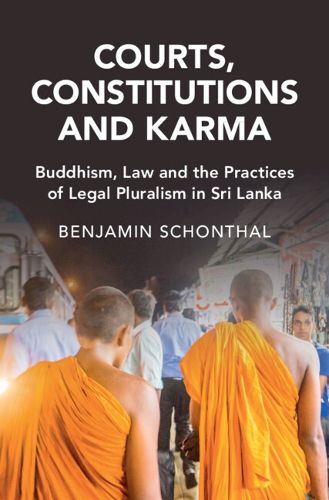Readings Newsletter
Become a Readings Member to make your shopping experience even easier.
Sign in or sign up for free!
You’re not far away from qualifying for FREE standard shipping within Australia
You’ve qualified for FREE standard shipping within Australia
The cart is loading…






Although rarely acknowledged, Buddhist monastics are among the most active lawmakers and jurists in Asia, operating sophisticated networks of courts and constitutions while also navigating-and shaping-secular legal systems. This book provides the first in-depth study of Buddhist monastic law and its entanglements with state law in Sri Lanka from 1800 to the present. Rather than a top-down account of colliding legal orders, Schonthal draws on nearly a decade of archival, ethnographic and empirical research to document the ways that Buddhist monks, colonial officials and contemporary lawmakers reconcile the laws of the Buddha and the laws of the land using practices of legal pluralism. Comparative in outlook and accessible in style, this book not only offers a portrait of Buddhist monastic law in action, it also yields new insights into how societies manage multi-legality and why legal pluralism leads to conflict in some settings and to compromise in others.
$9.00 standard shipping within Australia
FREE standard shipping within Australia for orders over $100.00
Express & International shipping calculated at checkout
Stock availability can be subject to change without notice. We recommend calling the shop or contacting our online team to check availability of low stock items. Please see our Shopping Online page for more details.
Although rarely acknowledged, Buddhist monastics are among the most active lawmakers and jurists in Asia, operating sophisticated networks of courts and constitutions while also navigating-and shaping-secular legal systems. This book provides the first in-depth study of Buddhist monastic law and its entanglements with state law in Sri Lanka from 1800 to the present. Rather than a top-down account of colliding legal orders, Schonthal draws on nearly a decade of archival, ethnographic and empirical research to document the ways that Buddhist monks, colonial officials and contemporary lawmakers reconcile the laws of the Buddha and the laws of the land using practices of legal pluralism. Comparative in outlook and accessible in style, this book not only offers a portrait of Buddhist monastic law in action, it also yields new insights into how societies manage multi-legality and why legal pluralism leads to conflict in some settings and to compromise in others.